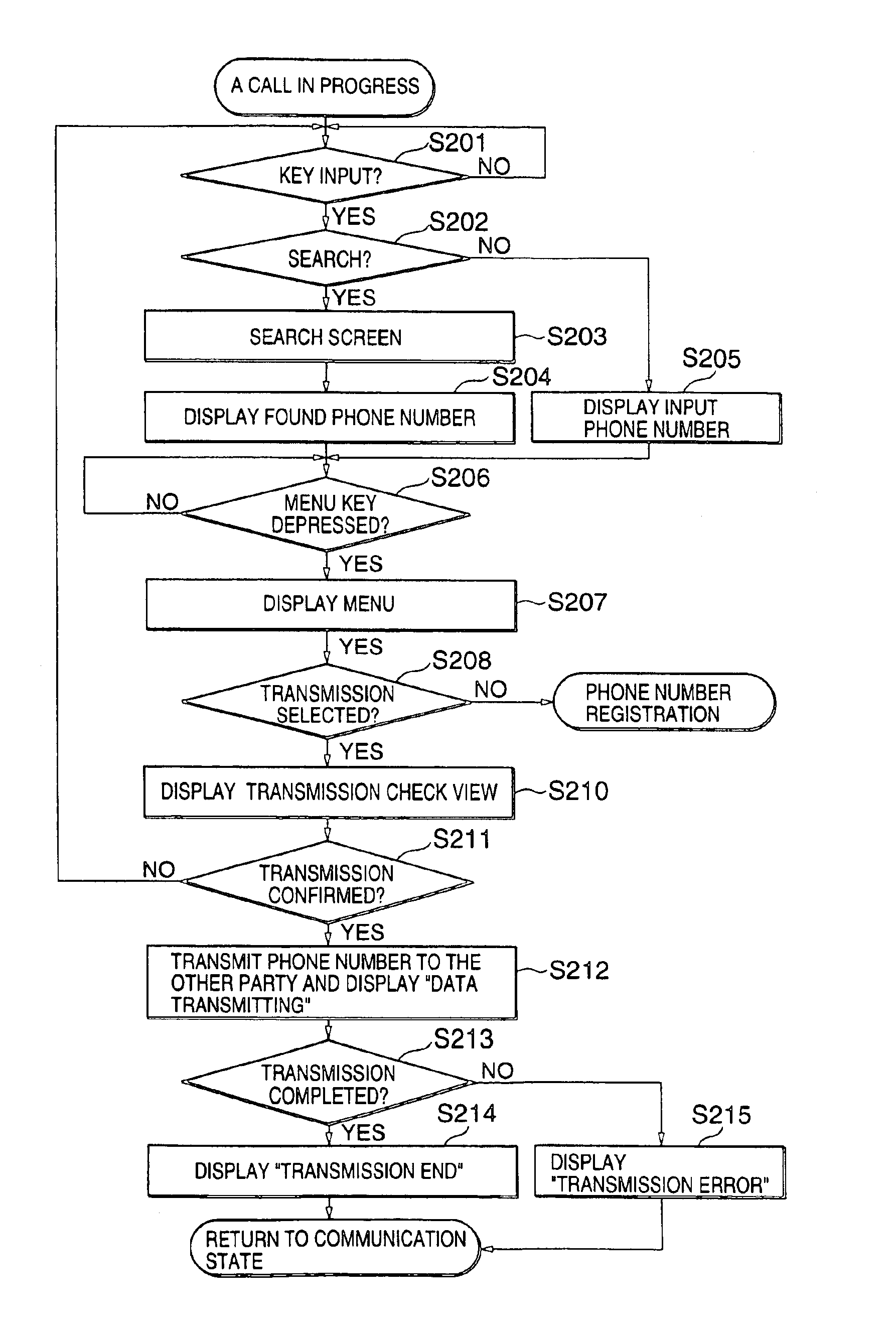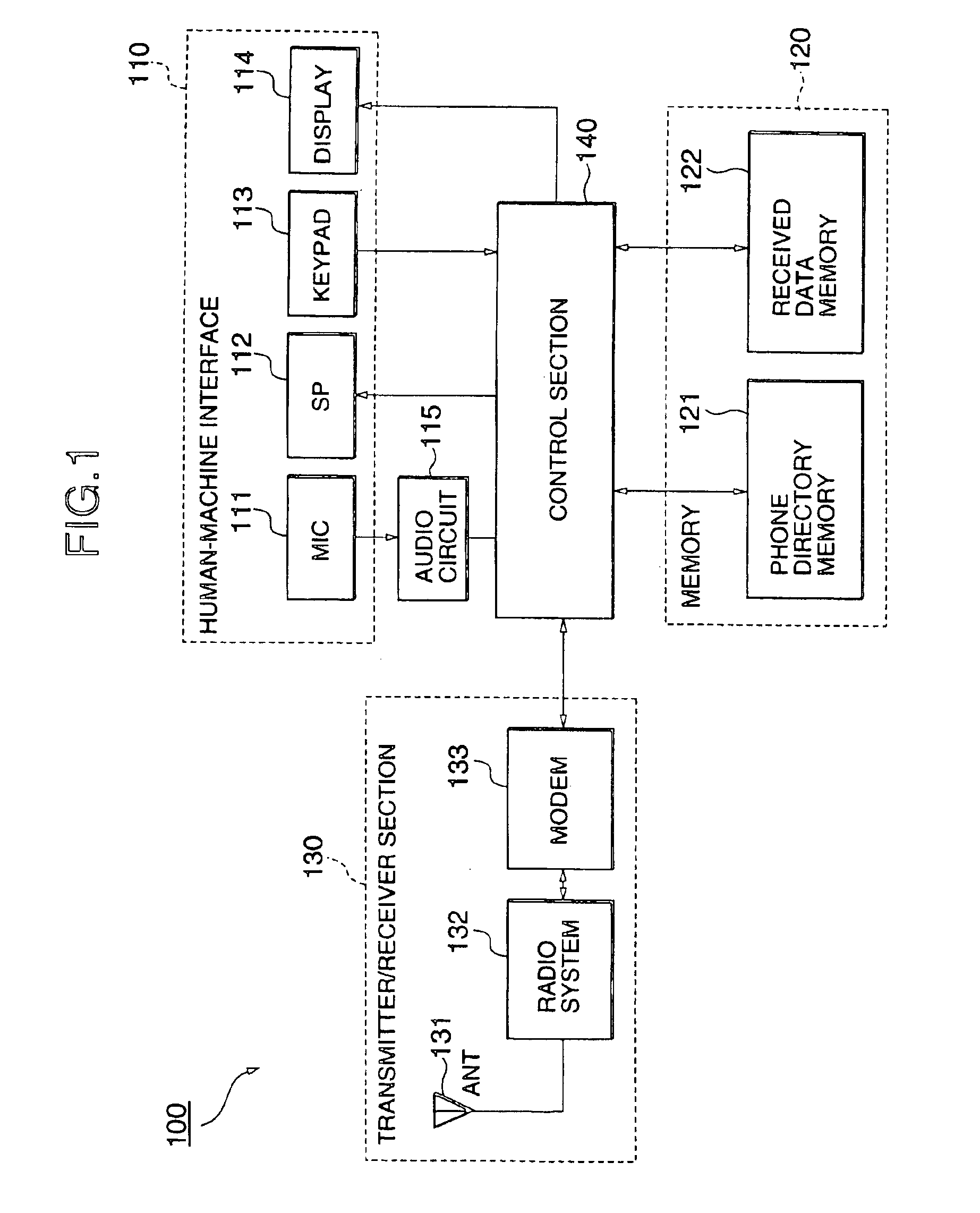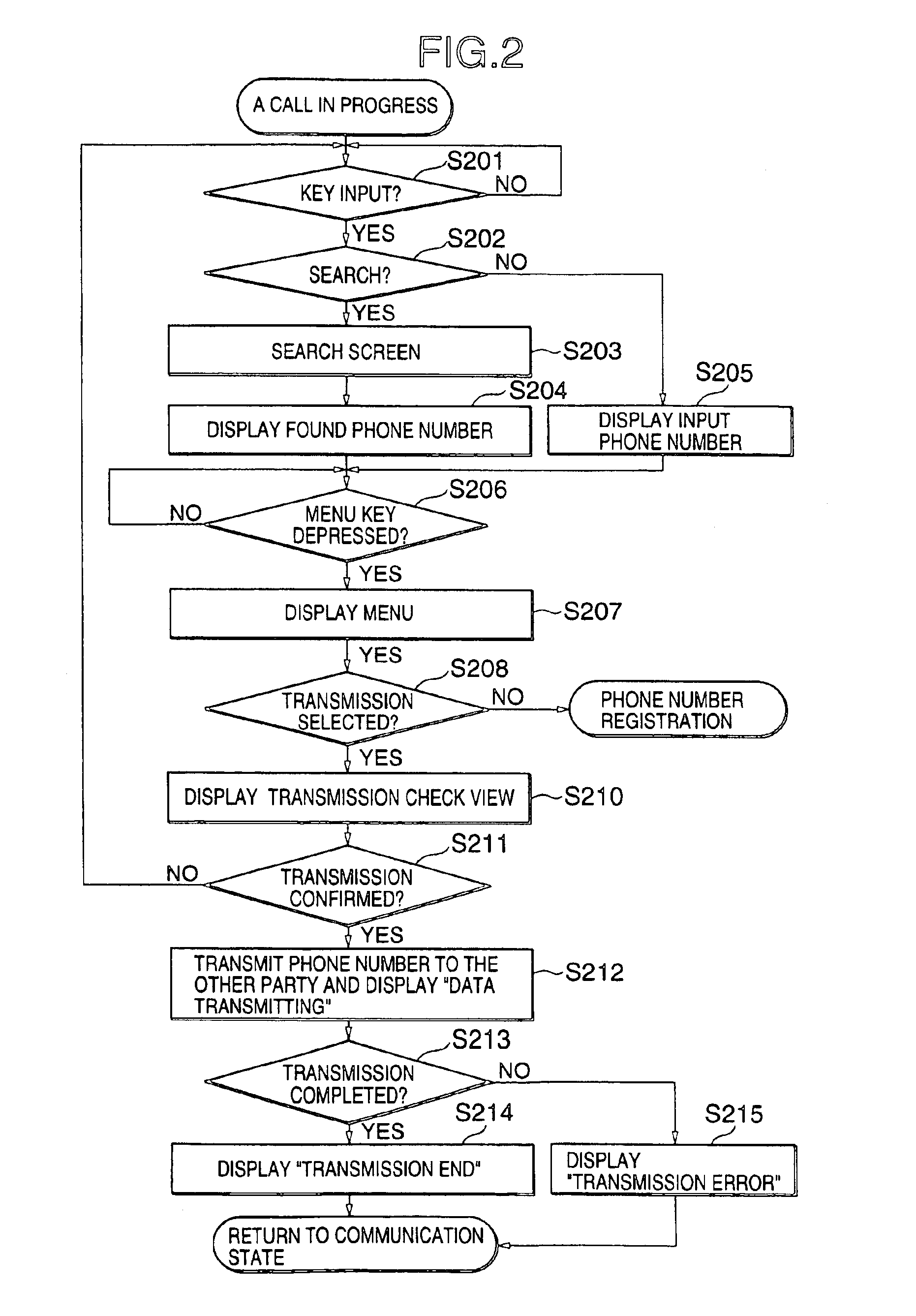Phone number transmission between telephone devices
a telephone device and telephone number technology, applied in the field of telephone devices, can solve problems such as dialing a wrong number, and achieve the effect of effectively avoiding human errors and being easy to register
- Summary
- Abstract
- Description
- Claims
- Application Information
AI Technical Summary
Benefits of technology
Problems solved by technology
Method used
Image
Examples
first embodiment
Referring to FIG. 1, there is shown a mobile telephone 100 in accordance with a first embodiment of the present invention. The mobile telephone is composed mainly of a human-machine interface 110, a memory 120, a transmitter / receiver section 130, and a control section 140.
The human-machine interface 110 is formed by a combination of a microphone 111 as telephone transmitter, a speaker 112 as telephone receiver, a keypad 113, and a display 114 such as a liquid-crystal display (LCD). A voice signal inputted through the microphone 111 is processed by an audio circuit 115 and enters the control section 140. The keypad 113 is used for the user to input data such as a destination phone number and various instructions such as transmission of a phone number desired by the other party, registration of a new phone number, retrieval of a registered telephone number and the likes. Here, the keypad 113 includes a so-called command navigation button. Necessary information is displayed on the disp...
second embodiment
Referring to FIG. 6, there is shown a mobile telephone 100A in accordance with a second embodiment of the present invention. The mobile telephone 100A has the almost same circuit configuration as the first embodiment except for a speech recognizer 610. Therefore, circuit blocks similar to those described with reference to FIG. 1 are denoted by the same reference numerals and the details thereof are omitted.
The speech recognizer 610 recognized a voice signal inputted from the audio circuit 115 to produce character data corresponding to the input voice information (here, digits of a phone number to be transmitted). Accordingly, a desired phone number can be entered by voice input without operating the keypad 113. The phone number transmission control will be described in detail referring to FIG. 7.
As shown in FIG. 7, it is assumed that a telephone call is in progress between two parties each having the mobile telephone 100A having the phone number transmission / reception function and f...
PUM
 Login to View More
Login to View More Abstract
Description
Claims
Application Information
 Login to View More
Login to View More - R&D
- Intellectual Property
- Life Sciences
- Materials
- Tech Scout
- Unparalleled Data Quality
- Higher Quality Content
- 60% Fewer Hallucinations
Browse by: Latest US Patents, China's latest patents, Technical Efficacy Thesaurus, Application Domain, Technology Topic, Popular Technical Reports.
© 2025 PatSnap. All rights reserved.Legal|Privacy policy|Modern Slavery Act Transparency Statement|Sitemap|About US| Contact US: help@patsnap.com



